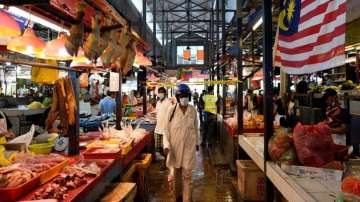Coronaviruses, the family of viruses which includes the COVID-19 causing SARS-CoV-2, is amplified along wildlife supply chains from traders to large markets to restaurants, according to a study which says the maximal risk is for end consumers of such products, likely explaining how these viruses jump species to humans.
In the research, published in the journal PLOS ONE, coronaviruses were detected in a high proportion of bats and rodents in Vietnam from 2013 to 2014, with an increasing proportion of positive samples found along the wildlife supply chain.
The scientists, including those from the Wildlife Conservation Society in the US, noted that there is an amplification of coronaviruses along this supply chain posed a very high risk for end consumers of such animal products.
They said this may likely explain how the virus jump species to humans and causes epidemics.
According to the study, outbreaks of emerging coronaviruses in the past two decades and the current pandemic caused by SARS-CoV-2 highlight the importance of this viral family as a public health threat.
Human-wildlife contact with a bat or an intermediate host species in China almost certainly triggered a coronavirus spillover event that may have involved wildlife markets, leading to the pandemic spread of SARS-CoV-2, the scientists said.
Beyond China, they added that commercial wildlife farming in Vietnam is part of the expanded international wildlife trade -- thought to contribute to global epidemics, such as the 2002-03 SARS pandemic, and the COVID-19 outbreak.
To better understand the natural hosts of coronaviruses and the risk for their jump across the species barrier into humans, the researchers analysed the presence and diversity of this virus family in wildlife at wildlife-human interfaces in Vietnam from 2013 to 2014.
They found high proportions of positive samples of coronaviruses among field rats (34.0 per cent) destined for human consumption and bats (74.8 per cent) adjacent to human dwellings.
The odds of coronavirus detection increased along the supply chain, from field rats sold by traders (20.7 per cent), to field rats sold in large markets (32.0 per cent), and field rats served in restaurants (55.6 per cent), the study noted.
It said coronaviruses were also detected in rodents on most wildlife farms sampled (60.7 per cent), affecting Malayan porcupines (6.0 per cent) and bamboo rats (6.3 per cent) raised for human consumption.
To minimise the public health risks of viral disease emergence, the researchers recommend improving coronavirus surveillance in wildlife, and implementing targeted wildlife trade reform.
"This study shows the wildlife supply chain generates a one-two punch when it comes to spillover risk. It is known to increase contact rates between wildlife and people, and here we show how it greatly amplifies the number of infected animals along the way," they said.
Latest World News
